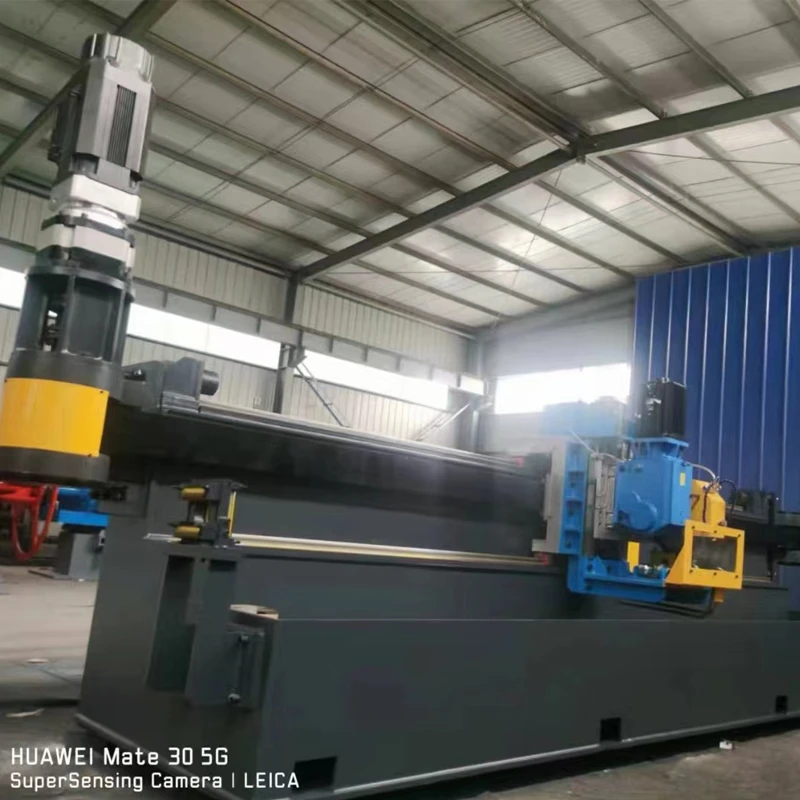Versatile Roll Forming Equipment for Efficient Upright Profiles Production
The Upright Roll Forming Machine Innovations in Modern Manufacturing
In the realm of contemporary manufacturing, the upright roll forming machine stands out as a significant advancement, streamlining the production of various metal components. This machine is pivotal in transforming flat metal sheets into intricate profiles used in construction, automotive, and numerous other industries. Understanding its functionality, benefits, and applications can provide insights into its critical role in modern manufacturing processes.
What is an Upright Roll Forming Machine?
An upright roll forming machine is a type of continuous forming machine that converts flat metal sheets into rolled shapes through a series of rollers. These machines are designed to handle a range of materials, including steel, aluminum, and other alloys. The upright configuration refers to the vertical arrangement of the forming rolls, which enables efficient space utilization and enhances the machine's capacity to produce complex profiles.
How Does it Work?
The operation of an upright roll forming machine begins with feeding flat metal sheets into the machine. As the metal travels through a series of sequential rollers, each roller incrementally shapes the material into the desired profile. The process is continuous, meaning that large quantities of shaped components can be produced in a relatively short period, making it an efficient choice for mass production.
The design of the rollers is crucial in determining the final product's specifications, including its thickness, width, and shape. Advanced upright roll forming machines are equipped with CNC technology, allowing for precise control over parameters and ensuring consistent quality. Additionally, many modern machines come with features that facilitate quick changeovers, allowing manufacturers to switch between different profiles with minimal downtime.
Advantages of Using Upright Roll Forming Machines
1. Efficiency and Speed One of the primary benefits of upright roll forming machines is their efficiency. The continuous process minimizes wasted material and time, enabling manufacturers to produce large volumes of components quickly.
2. Versatility These machines can produce a wide variety of profiles, from simple shapes to complex forms. This versatility makes them suitable for diverse applications across various industries, including construction, aerospace, and automotive.
upright roll forming machine

3. Cost-Effectiveness By reducing material waste and labor costs, upright roll forming machines can lead to significant savings. The high-speed production capability also means that manufacturers can increase their output without a proportional increase in operational costs.
4. Consistency and Quality The precision of the forming process ensures high-quality products with minimal variation. This consistency is particularly important in industries where specifications are critical, such as automotive and aerospace sectors.
5. Reduced Labor Requirements Automation and advanced controls in modern upright roll forming machines reduce the need for manual intervention, thus allowing personnel to focus on other critical tasks in the production process.
Applications across Industries
Upright roll forming machines are employed in various sectors due to their adaptability and reliability. In the construction industry, they are used to create structural beams, wall panels, and roofing systems. The automotive industry relies on these machines to produce components such as chassis parts, supporting brackets, and trim pieces. Additionally, manufacturing industries utilize these machines for creating products ranging from electrical enclosures to custom metal furniture components.
Future of Upright Roll Forming Machines
As technology advances, the future of upright roll forming machines looks promising. Innovations such as Industry 4.0 integration, where machines are connected through the Internet of Things (IoT), will further enhance efficiency and data collection. This integration allows for real-time monitoring, predictive maintenance, and streamlined operations.
Moreover, the increasing focus on sustainable manufacturing practices will likely drive further innovations in roll forming technology. Machines are being designed to optimize energy consumption and minimize waste, contributing to a more sustainable manufacturing ecosystem.
Conclusion
The upright roll forming machine exemplifies the intersection of efficiency, versatility, and innovation in modern manufacturing. By transforming flat sheets into complex metal profiles, these machines play a vital role in various industries, making them indispensable in today’s fast-paced production environments. As technology continues to evolve, the capabilities and applications of upright roll forming machines are set to expand, paving the way for a more connected and sustainable manufacturing future.
-
High Frequency Straight Seam Welded Pipe Production Line-BzZhou Xinghua Machinery Equipment Manufacturing Co., LTD.|line pipe steel&welded gas pipeNewsJul.30,2025
-
High Frequency Straight Seam Welded Pipe Production Line-BzZhou Xinghua Machinery Equipment Manufacturing Co., LTD.|High Precision&Automated SolutionsNewsJul.30,2025
-
High Frequency Straight Seam Welded Pipe Production Line - BzZhou Xinghua Machinery Equipment Manufacturing Co., Ltd.NewsJul.30,2025
-
High Frequency Straight Seam Welded Pipe Production Line-BzZhou Xinghua Machinery Equipment Manufacturing Co., LTD.|Precision Welding, High EfficiencyNewsJul.30,2025
-
High Frequency Straight Seam Welded Pipe Production Line|BzZhou Xinghua|Precision Welding&EfficiencyNewsJul.30,2025
-
High Frequency Straight Seam Welded Pipe Production Line - BzZhou Xinghua|Precision Engineering&EfficiencyNewsJul.30,2025


